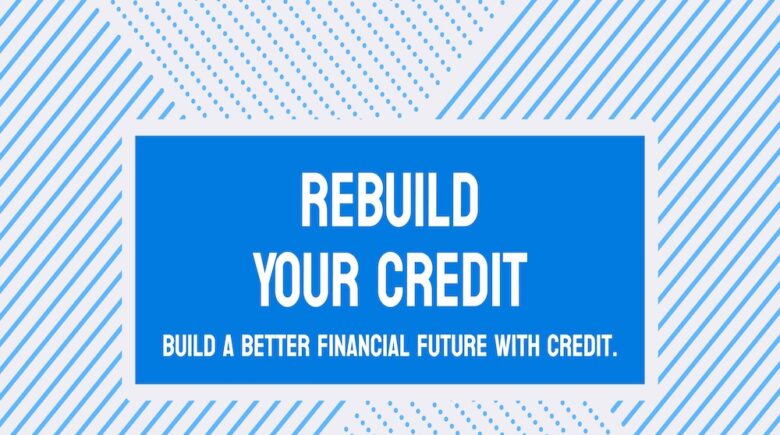The financial landscape of 2025 looks dramatically different from just a few years ago. Rising interest rates, evolving credit scoring models, and the rapid integration of fintech solutions have transformed how Americans build and maintain their financial health. For millennials navigating student debt, homeownership dreams, and retirement planning, understanding credit has never been more critical. Moreover, the shift toward digital-first banking and AI-driven lending decisions means that traditional credit wisdom needs a serious update. This guide explores how to master your credit profile in today’s complex environment, focusing on resilience-building strategies and smart refinancing approaches that actually work in 2025’s market conditions.
Why Credit Resilience Matters More Than Ever
Credit resilience refers to your ability to maintain healthy credit scores despite economic turbulence. In 2025, this concept has gained tremendous importance as financial institutions increasingly use alternative data points alongside traditional FICO scores. Lenders now examine your digital footprint, payment patterns across subscription services, and even your banking behavior to assess creditworthiness. Consequently, building resilience means protecting multiple aspects of your financial identity, not just making timely credit card payments.
The economic volatility we’ve experienced since 2020 has taught us valuable lessons about financial preparedness. Furthermore, regulatory changes from the Consumer Financial Protection Bureau have expanded consumer rights regarding credit reporting accuracy. These changes allow you to dispute errors more effectively and demand transparency from credit bureaus. Additionally, new fintech platforms have emerged that help consumers monitor their credit in real-time, offering alerts when suspicious activity occurs or when scores fluctuate significantly.
Building credit resilience starts with understanding that your credit profile is dynamic, not static. Therefore, you need strategies that adapt to changing circumstances. This includes maintaining diverse credit types, keeping credit utilization below 30%, and establishing emergency funds that prevent you from relying on credit during unexpected expenses. Meanwhile, the integration of open banking APIs means your financial data flows more freely between institutions, making it easier to consolidate your financial picture but also requiring heightened data security awareness.
The Digital Transformation of Credit Management
Technology has revolutionized how we interact with credit products and manage our financial health. Today’s credit management tools leverage artificial intelligence to provide personalized recommendations based on your spending patterns and financial goals. For instance, apps like Credit Karma and NerdWallet now offer simulators that show exactly how specific actions will impact your score before you take them. Similarly, many banks have integrated credit monitoring directly into their mobile apps, eliminating the need for separate services.
The rise of digital-only banks has also disrupted traditional lending models. These fintech companies often approve loans faster and offer more flexible terms than conventional banks. However, they also collect vast amounts of data about your financial behavior. This digital transformation creates both opportunities and risks for consumers. On one hand, you can access credit products tailored to your specific situation. On the other hand, you must remain vigilant about data privacy and understand exactly what information you’re sharing with these platforms.
Blockchain technology and decentralized finance (DeFi) are beginning to influence mainstream credit markets as well. Although still emerging, these technologies promise more transparent lending processes and potentially lower costs by eliminating intermediaries. Nevertheless, regulatory frameworks around these innovations remain unclear, so consumers should approach them cautiously while staying informed about developments in this space.
Smart Refinancing Strategies for Today’s Market
Refinancing in 2025 requires a more nuanced approach than simply chasing the lowest interest rate. Market conditions have created unique opportunities for strategic borrowers who understand timing and leverage. Currently, interest rates have stabilized after years of volatility, but they remain higher than the historic lows of 2020-2021. Therefore, refinancing makes sense primarily for those who took out loans during peak rate periods or whose credit scores have improved significantly since their original loan.
The refinancing landscape now includes more options than ever before. Traditional banks compete with online lenders, credit unions, and peer-to-peer platforms for your business. Each option offers different advantages depending on your situation. For example, credit unions typically provide lower rates for members with strong relationships, while online lenders often process applications faster and require less documentation. Additionally, some fintech companies specialize in refinancing specific debt types, such as student loans or credit card balances, offering tailored solutions that traditional banks might not match.
Before refinancing anything, you should calculate the true cost including fees, closing costs, and the total interest paid over the loan’s lifetime. Many borrowers make the mistake of focusing solely on monthly payment reductions without considering how extending loan terms affects total costs. Furthermore, check whether your current loan has prepayment penalties that could negate refinancing benefits. Smart refinancing also means considering your long-term financial goals—sometimes keeping a higher-rate loan makes sense if you plan to pay it off quickly or if refinancing would reset your progress toward loan forgiveness programs.
Rebuilding Credit After Financial Setbacks
Financial setbacks happen to everyone, but recovery strategies have evolved significantly. If your credit took a hit from late payments, collections, or bankruptcy, the path forward involves both time and strategic action. First, understand that negative items affect your score less as they age, and most disappear from your report after seven years. Meanwhile, you can actively rebuild by becoming an authorized user on someone else’s account or by using secured credit cards designed specifically for credit building.
The key to successful credit rebuilding lies in establishing positive payment history consistently. Even small, manageable credit lines that you pay off monthly demonstrate creditworthiness to future lenders. Moreover, many creditors now offer “fresh start” programs for customers recovering from hardship. These programs might include lower interest rates or modified payment plans that help you catch up without further damaging your credit. Don’t hesitate to contact creditors directly—they often prefer working with you rather than sending accounts to collections.
Recent regulatory changes have made credit rebuilding somewhat easier than in previous years. For instance, medical debt under $500 no longer appears on credit reports, and the reporting threshold for tax liens has increased. Additionally, rent reporting services now allow you to add positive rental payment history to your credit file, which previously went unrecognized. These changes create more pathways to demonstrate financial responsibility beyond traditional credit products.
Protecting Your Credit in an Increasingly Digital World
As financial services move online, credit security has become paramount. Data breaches affecting major credit bureaus and financial institutions have exposed millions of consumers to identity theft risks. Consequently, you must take proactive steps to protect your credit information. Credit freezes remain one of the most effective tools—they prevent new accounts from being opened in your name while still allowing you to access your existing credit. Unlike credit locks offered by bureaus, freezes are free and provide stronger legal protections.
Multi-factor authentication should be enabled on every financial account you maintain. Additionally, review your credit reports from all three bureaus at least quarterly through AnnualCreditReport.com. Look for unfamiliar accounts, incorrect personal information, or suspicious inquiries. If you spot errors, dispute them immediately using the documentation processes that the CFPB has strengthened in recent years. Furthermore, consider identity theft protection services if you’ve been affected by data breaches or if you handle sensitive information professionally.
The integration of biometric authentication and AI-driven fraud detection has made accounts more secure, but these technologies aren’t foolproof. Therefore, maintain good digital hygiene by using unique passwords, avoiding public Wi-Fi for financial transactions, and regularly updating your devices and apps. Remember that your credit profile is valuable—criminals can use it to secure loans, open accounts, or commit tax fraud. Protecting it requires ongoing vigilance, not just one-time actions.
Mastering credit in 2025 demands more than following old rules about paying bills on time. It requires understanding how digital transformation, regulatory changes, and fintech innovation have reshaped the entire credit ecosystem. By building resilience through diverse strategies, refinancing intelligently when opportunities arise, and protecting your credit data vigilantly, you position yourself for financial success regardless of economic conditions. The tools and resources available today give consumers unprecedented control over their credit profiles, but they also require active engagement and continuous learning. Start implementing these strategies now, and you’ll build the financial foundation that supports your long-term goals while adapting to whatever changes 2025 and beyond might bring.
References
- Consumer Financial Protection Bureau. (2024). “Credit Reporting and Scores.” https://www.consumerfinance.gov/consumer-tools/credit-reports-and-scores/
- NerdWallet. (2025). “How to Build Credit: A Complete Guide.” https://www.nerdwallet.com/article/finance/how-to-build-credit
- Federal Trade Commission. (2024). “Credit Freeze FAQs.” https://www.consumer.ftc.gov/articles/what-know-about-credit-freezes-and-fraud-alerts

